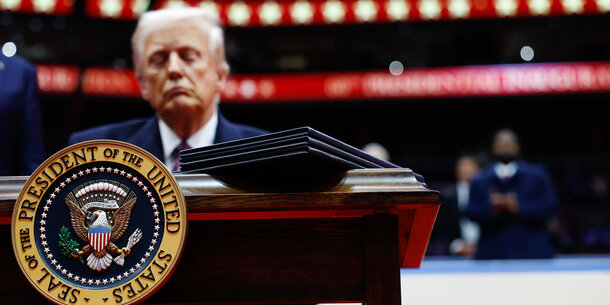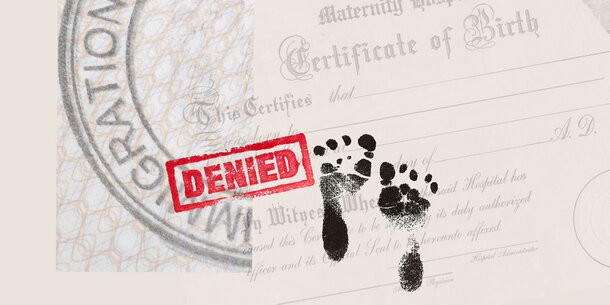The Supreme Court last week rightly upheld the Consumer Financial Protection Bureau’s funding mechanism. But the most telling part of the ruling was how the justices got there. Dueling opinions by the Court’s chief originalists and concurrences from several of their colleagues revealed conflicting views of history’s importance to the case and what that history shows. Read together, they perfectly illustrate the false objectivity and antidemocratic thrust of the conservatives’ originalist project.
In Consumer Financial Protection Bureau v. Community Financial Services Association of America, the Court rejected a challenge to legislation authorizing the bureau to pull its operating funds directly from the Federal Reserve. Trade associations representing payday lending companies argued that this funding scheme was unconstitutional. Writing for the majority, Justice Clarence Thomas concluded that the bureau’s funding was consistent with understandings of the Constitution’s Appropriations Clause at the time of the country’s founding. Justices Elena Kagan and Ketanji Brown Jackson filed concurrences offering some added reasons of their own — some historical, some not. Meanwhile, Justice Samuel Alito filed a dissent, reading history for the opposite conclusion: the bureau’s funding scheme is unconstitutional, because early understandings of the Appropriations Clause require executive agencies to request funding from Congress every year.
Read together, the justices’ writings draw out some of the many the problems with the Court’s drive to resolve constitutional questions solely through reference to the distant past.
First, take the historical dispute between Thomas and Alito. Both self-proclaimed originalists, they each look back centuries for answers and even consider much of the same historical evidence. But they reach opposite conclusions about what that evidence means. What’s more, Thomas’s conclusions contradict the ruling of the federal appeals court below, which also claimed to be following the original meaning of the Appropriations Clause.
Setting aside the merits of these conflicting historical accounts, their very existence presents a deep problem for originalism, which contends it constrains judges by tying their interpretations of laws to their one “true” historical meaning. If that meaning can vary from judge to judge — even when all those judges claim to be undertaking an originalist analysis of much of the same material — originalism’s claims to provide objective constraints ring hollow. Indeed, Thomas and Alito can reach differing conclusions because history typically does not speak with a single, authoritative voice on legal questions. Originalist judges, in turn, are not neutral messengers of definite historical truths. Instead, they are subjective interpreters of the historical record. Their legal conclusions reflect individualized decisions they each make about what evidence is relevant, how it’s relevant, and why it’s relevant.
Kagan’s concurrence sheds light on another problem with Thomas and Alito’s originalism: Both justices reach their conclusions while ignoring almost all of American history. They begin in England in the Middle Ages and end shortly after the ratification of the Constitution, with a heavy emphasis on British history prior to the American Revolution. In contrast, Kagan focuses on the whole sweep of American history following the Constitution’s ratification, concluding that the bureau’s funding scheme “would have fit right in . . . at any other time in our Nation’s history.” For Kagan, in short, it’s important to understand not just what the founding generation thought, but also how the Constitution has been understood over time.
Kagan’s approach throws into high relief just how concerned Thomas and Alito’s originalism is with what Thomas calls “preratification” history to the exclusion of all else. For them, American history ends almost as soon as it begins. For Kagan, there’s hundreds of years more. Likewise, Kagan’s approach spotlights the curious way their preratification fixation elevates the law of a monarchy over the law of our democracy in our constitutional discourse, giving significant attention to the doings of kings while completely ignoring our own multi-century experience living and governing under our Constitution.
Even the Court’s originalist bloc isn’t unified behind Thomas and Alito’s preratification fixation, as the signatories to Kagan’s concurrence show. Justices Brett Kavanaugh and Amy Coney Barrett joined Kagan and Justice Sonia Sotomayor in embracing a wider historical frame of reference. This is particularly notable given Kavanaugh and Barrett’s earlier votes for Thomas and Alito’s respective originalist opinions in Bruen and Dobbs. Time will tell whether their common thinking in this case signals a larger, lasting realignment among the Court’s originalists.
Jackson’s concurrence exposes yet one more problem with Thomas and Alito’s originalism: It is completely disconnected from daily life. Her concurrence centers on the context in which the bureau was established and Congress’s intent behind creating the funding scheme, which sought to insulate the bureau from the lobbying influence of the industry actors it is supposed to regulate. Jackson invests this context with legal meaning, cautioning her colleagues against overriding Congress’s policy judgments when the Constitution doesn’t give the courts clear permission to do so.
None of this matters to either Thomas or Alito. Indeed, originalism has so distorted the justices’ perspectives that they spill far more ink on the relationship between kings and Parliament than on what the bureau actually does or how its operations affect the lives of people living in the present.
The bureau’s continued ability to operate warrants a sigh of relief. But the Court is still laboring under an originalism that is showing its cracks. Non-originalist justices and others are offering the Court’s originalists several ways out. They should follow. We need an approach to our Constitution that honors the American experience, not one that alternatively ignores, misrepresents, and undermines it.







